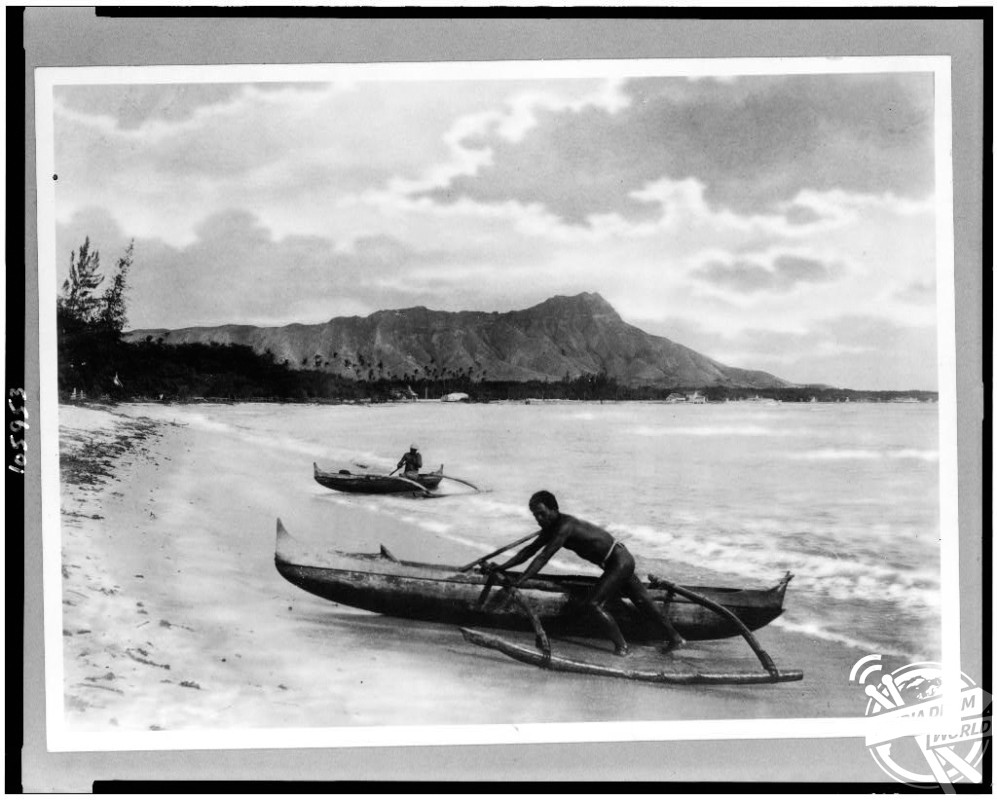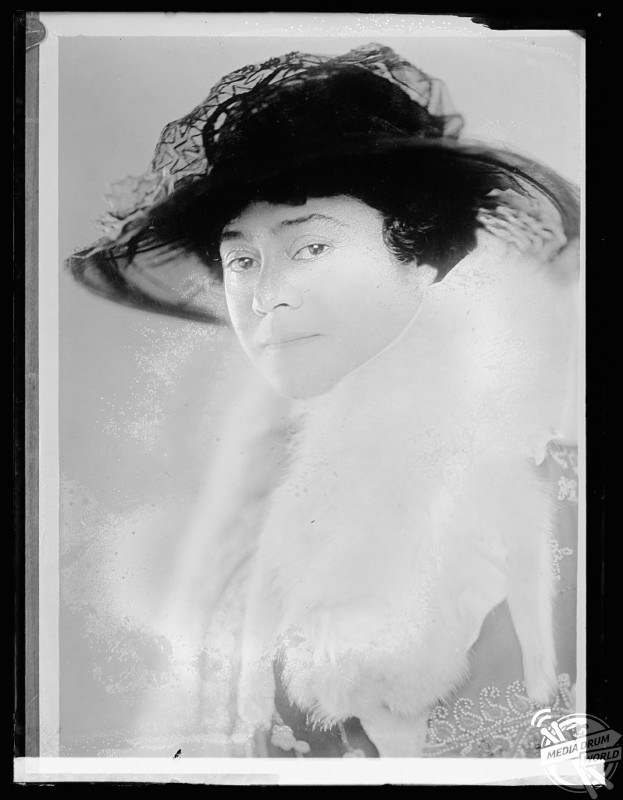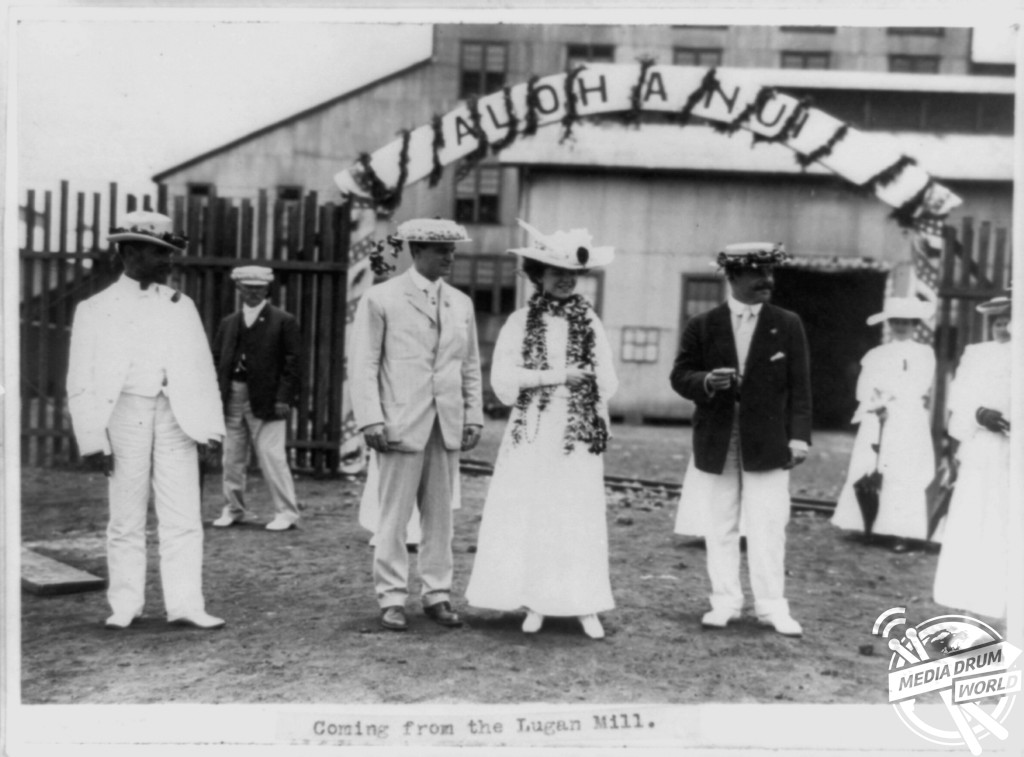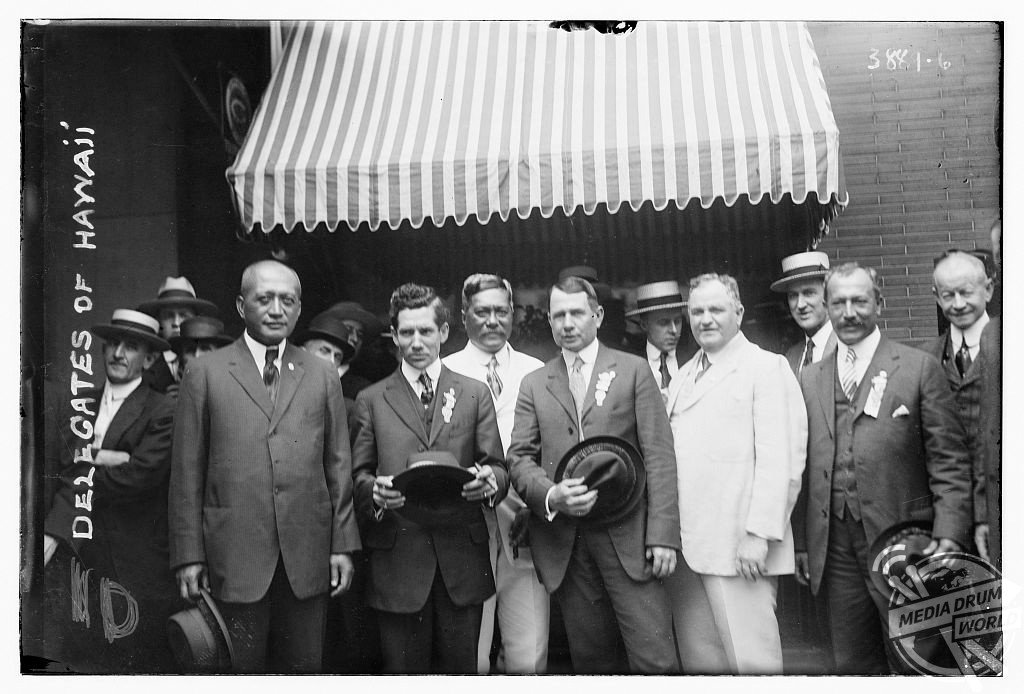By Ben Wheeler
INCREDIBLE images showcasing Hawaii in the early twentieth century have been released to mark the 240th anniversary of Captain James Cook becoming the first recorded European to discover the islands.
Striking pictures show four hula dancers in the crater of Punch Bowl Mountain in 1901, workers harvesting pineapples in 1910 and natives with outrigger canoes at the shoreline in Honolulu.

Other eye-opening snaps show Mrs Lawrence Lewis holding a flag with the Hawaiian star stitched on before it was officially a state and portraits of Hawaiian royalty including Liliuokalani, Queen of Hawaii.
The archipelago of eight islands was formerly known to Europeans and Americans as the ‘Sandwich Islands’, a name chosen by Cook in honour of the then First Lord of the Admiralty John Montagu, 4th Earl of Sandwich, the name stayed in use until the 1840s when the local name ‘Hawaii’ gradually began to take precedence.

Cook first visited the islands on January 18, 1778, when he docked at Waimea harbour, Kauai. The visit formed part of Cook’s final voyage and ultimately led to his untimely death.
Upon returning to the islands the following year for repairs to his ship, tensions began to rise with a number of arguments breaking out between the Europeans and natives at Kealakekua Bay.
One evening, a group of Hawaiians took one of Cook’s small boats which was followed by a number of threats to the Captain.

In his anger, the following morning Cook marched through the village in an attempt to kidnap and ransom the King of Hawaii, Kalaniʻōpuʻu, taking him by the hand and leading him away.
One of the King’s wives and two chiefs stopped them in their tracks as they were headed towards the boat, pleading with Kalaniʻōpuʻu not to go with Cook and his crew.

A large crowd began to form as the King started to understand that Cook was his enemy. As Cook turned his back to help launch the boats, he was struck on the head with a club by a villager and then stabbed to death on the shore along with four other members of his crew.
Despite this, the esteem in which the islanders held Cook meant they retained his body, preparing his body with traditional rituals usually reserved for the chiefs and highest elders in society.

The captains body was disembowelled and then baked to facilitate the removal of flesh, with his bones carefully cleaned for preservation as religious icons.
Some of Cook’s remains were eventually returned to the remaining members of his crew who gave him a formal burial at sea.







